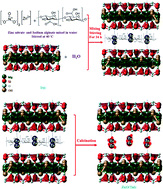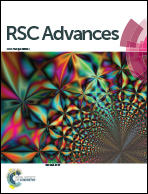Synthesis of zinc oxide/talc nanocomposite for enhanced lead adsorption from aqueous solutions
Abstract
In this study, talc was modified with zinc oxide nanoparticles to form a ZnO/talc nanocomposite. The nanocomposite was characterized using X-ray powder diffraction, Fourier transform infrared spectroscopy, nitrogen adsorption/desorption, field emission scanning electron microscopy. The characterization revealed that ZnO nanoparticles were well incorporated with the talc. The adsorption efficiency of the prepared nanocomposite was evaluated for Pb(II) removal from aqueous solution. The related parameters such as agitating time, dosage and pH, were optimized. Adsorption characteristics of the talc, and ZnO/talc nanocomposite were compared and the results showed that ZnO/talc nanocomposite had the highest adsorption capacity. The kinetic sorption data were found to fit the pseudo-second-order kinetic model. The experimental isotherm data of lead adsorption were examined using the Freundlich and the Langmuir models. The maximum lead adsorption capacity of the adsorbent was determined as 48.3 mg g−1. The mechanism of adsorption was found to be controlled by electrostatic attraction on the nanocomposite. The overall results indicated the prepared nanocomposite can be employed as an alternative for Pb(II) removal from wastewater.


 Please wait while we load your content...
Please wait while we load your content...